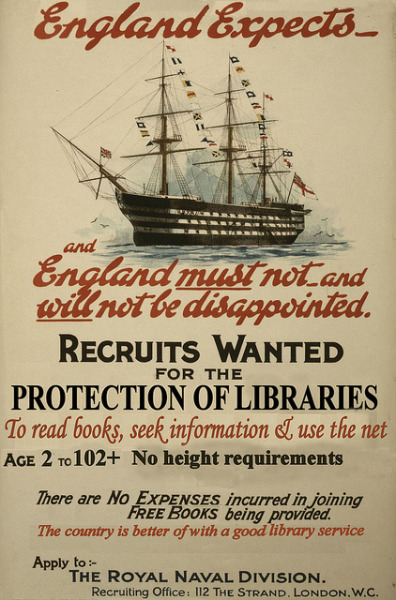An interesting dispatch from a UK Librarian (Lauren of Walk You Home) about showing the value of Public Libraries to the hack/slash budget crowd.
She puts together a decent list, and then goes on to add:
This isn’t airy-fairy-bunkum or crazy-lefty-ideology (sorry, Mayor Davies) – this is about the fundamentals of society. Libraries are cultural, educational and civic hubs. They always have been, and they always should be. Information and information needs are changing, but information’s not going away, and nor are people! What isn’t clear, though, is how we can prove this to the bean-counters of the world (because sadly, they’re not going away either).
An awful lot of qualitative data has been pouring into the Voices for the Library inbox for several months now. We’ve been presenting it in different ways – stories, guest blog posts, a Mashup challenge, a Wordle about “what libraries mean to you“…
We’ve even had some offers of support from academic departments keen to do something with all the information we’ve been gathering. Hopefully there’ll be time at some point soon to take them up on the offer![full post]
Academic collaborations along these line are already taking place in the US, and some have produced results. Studies like these have to be helpful. Though it would imply there was an actual reasonable rational discussion taking place on the matter. And, I’m not sure that real information is making it through the ideological clatter.
Still, a new set of portable metrics would be useful. I wonder why someone hasn’t sat down and put together a kit that public libraries can use to generate the sort of economic “straight talking” statistics and dollar amounts that carry water in policy/budget discussions.
There is momentum in that direction. Lauren’s going to what looks like a pretty interesting event on the subject.
…in a couple of weeks I will be taking part in a workshop entitled Measuring the Value of Public Libraries: The fallacy of footfall and issues as measures of the value of public libraries. I’m really looking forward to it, and I hope that it will be a step away from the simplistic and inaccurate measurement of footfall (the number of people who walk through the doors, and occasionally the people who click on the council’s ‘library’ website) and issue statistics (book/cd/dvd lending), and towards more effective systems of measurement.
I’m jealous and would love to know what kinds of metrics they get into.





